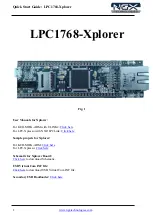
H11DSi-NT User's Manual
50
6.
To find out if a component is good, swap this component with a new one to see if the
system will work properly. If so, then the old component is bad. You can also install the
component in question in another system. If the new system works, the component is
good and the old system has problems.
3.2 Technical Support Procedures
Before contacting Technical Support, please take the following steps. Also, note that as a
motherboard manufacturer, we do not sell directly to end-users, so it is best to first check with
your distributor or reseller for troubleshooting services. They should know of any possible
problem(s) with the specific system configuration that was sold to you.
1. Please review the ‘Troubleshooting Procedures’ and 'Frequently Asked Questions'
(FAQs) sections in this chapter or see the FAQs on our website before contacting
Technical Support.
2. BIOS upgrades can be downloaded from our website.
Note:
Not all BIOS can be
flashed depending on the modifications to the boot block code.
3. If you still cannot resolve the problem, include the following information when contacting
us for technical support:
•
Motherboard model and PCB revision number
•
BIOS release date/version (this can be seen on the initial display when your system first
boots up)
•
System configuration
An example of a Technical Support form is posted on our website.
Distributors: For immediate assistance, please have your account number ready when
contacting our technical support department by e-mail.
3.3 Frequently Asked Questions
Question: What type of memory does my motherboard support?
Answer: The H11DSi-NT motherboard supports up to 2 TB of ECC DDR4 2400/2666 MHz
speed, RDIMM/LRDIMM/3DS/NVDIMM memory in sixteen (16) slots. See Section 2.4 for
details on installing memory.
Question: How do I update my BIOS?
Answer:
It is recommended that you
do not
upgrade your BIOS if you are not experiencing
any problems with your system. Updated BIOS files are located on our website at
http://www.
















































